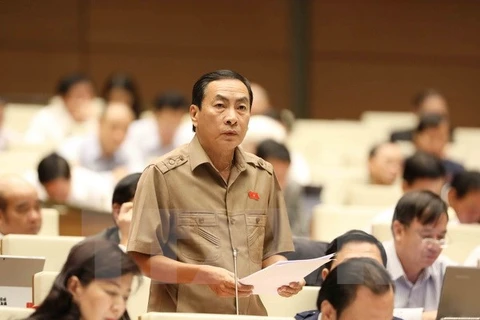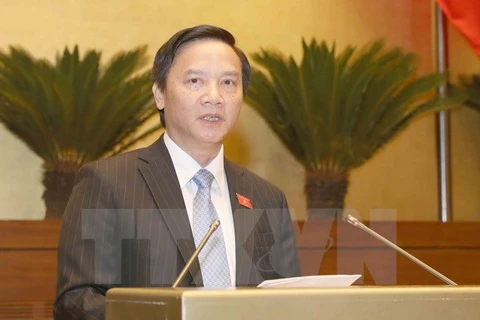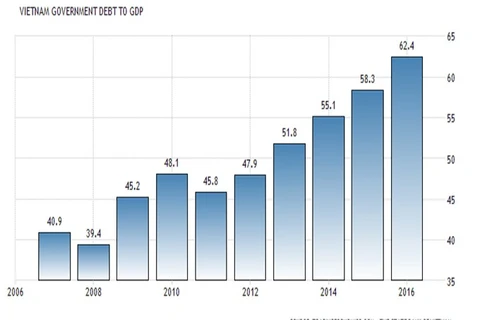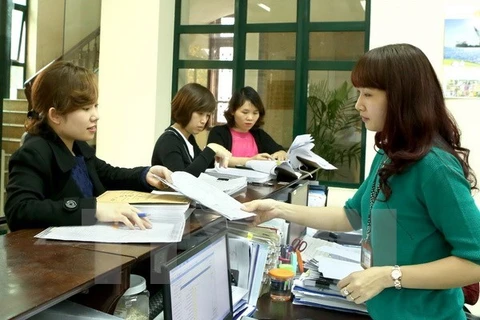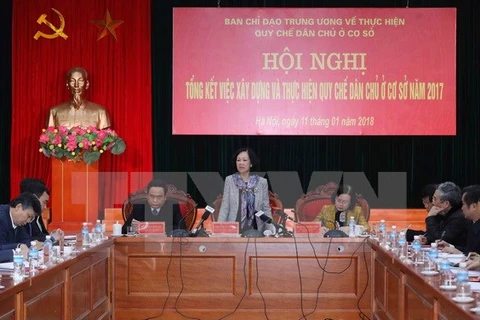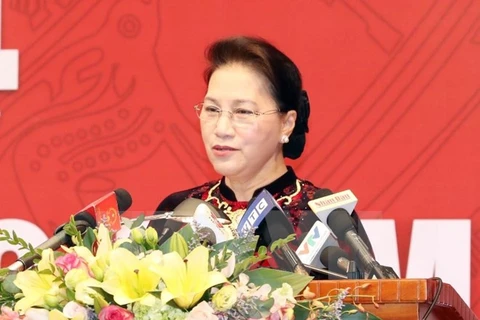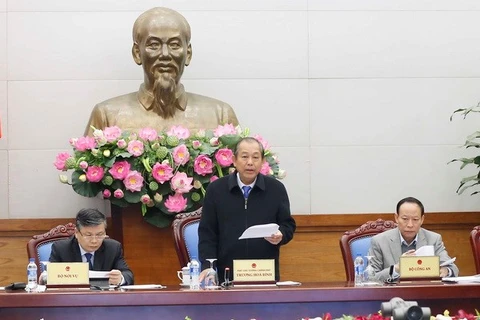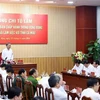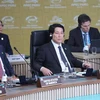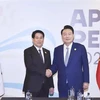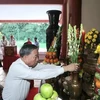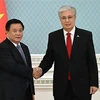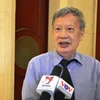 Party General Secretary Nguyen Phu Trong (second from right) attended an online conference reviewing Party building work in 2017 and deploying tasks of 2018. (Photo: VNA)
Party General Secretary Nguyen Phu Trong (second from right) attended an online conference reviewing Party building work in 2017 and deploying tasks of 2018. (Photo: VNA) Hanoi, (VNA) – Building a streamlined and effective apparatus for the political system is one of the key tasks that the Communist Party of Vietnam (CPV) has set for the 12th tenure.
With high political resolve, Resolution 18-NQ/TW adopted by the 6th plenum of the 12th CPV Central Committee emphasised streamlining personnel in combination with re-organising, improving the quality of, and effectively using the contingent of officials, public servants and civil workers; cutting regular spending and contributing to reforming salary policies.
To carry out the resolution along with related plans and resolutions of the CPV Politburo and the National Assembly, the Government issued a resolution on a Plan of Action on February 3, 2018, urging drastic and urgent actions.
Under the resolution, the Government requires ministries, ministry-level agencies and Government agencies to review, re-arrange and streamline their apparatus, cut the numbers of general departments, departments, sections and sub-sections. The establishment of new organisations or sections under departments will not be allowed, except for special cases that need approval of competent authority. The number of project management units must be reduced to the minimum. Public non-business agencies must be merged and re-arranged to reduce their number and personnel.
Right in the first quarter of 2018, ministers, heads of ministry-level agencies, heads of Government agencies, and Chairs of People’s Committees of provinces and centrally-run cities were ordered to design and issue plans to implement Resolution 18-NQ/TW and related plans and resolutions of the Politburo, the National Assembly and the Government.
With a detailed plan and roadmap, the Plan of Action demonstrates the Government’s high resolve to concretise the Party’s policy, thus helping create remarkable changes in the awareness and actions of officials, public servants and civil workers at all levels as well as workers across all sectors and society as a whole regarding the reform of the political system’s apparatus.
Previously, at a working session with the Government in August 2017, an inspection team of the National Assembly which monitored the reform of the State administrative apparatus during 2011-2016, noted that there were yet any remarkable changes in the Government’s organisation and structure in the direction of compactness and focusing on macro management and policy making, while cutting involvement in direct management and execution work.
In the period from 2011 to 2016, the number of administrative units under ministries and ministry-level agencies increased by 28, while those under general departments rose by 822. As of June 2017, there were 42 general departments, double the number in the Government’s 11th tenure. The numbers of departments and sections also increased by between 4.7 and 13.6 percent compared to 2011.
It is noteworthy that such an expanded apparatus was unable to cover all aspects of State management. According to the Government’s reports, in 2011 there were two aspects that had not been subject to State management and the problem was not solved until August 2017. At present, there are 18 aspects under overlapping management, or affected by differing viewpoints on the scope of responsibility among ministries and sectors.-VNA
